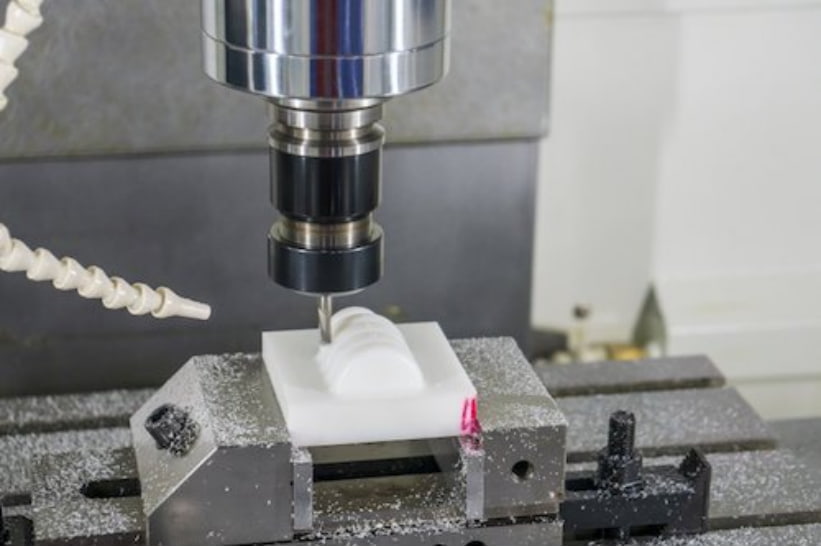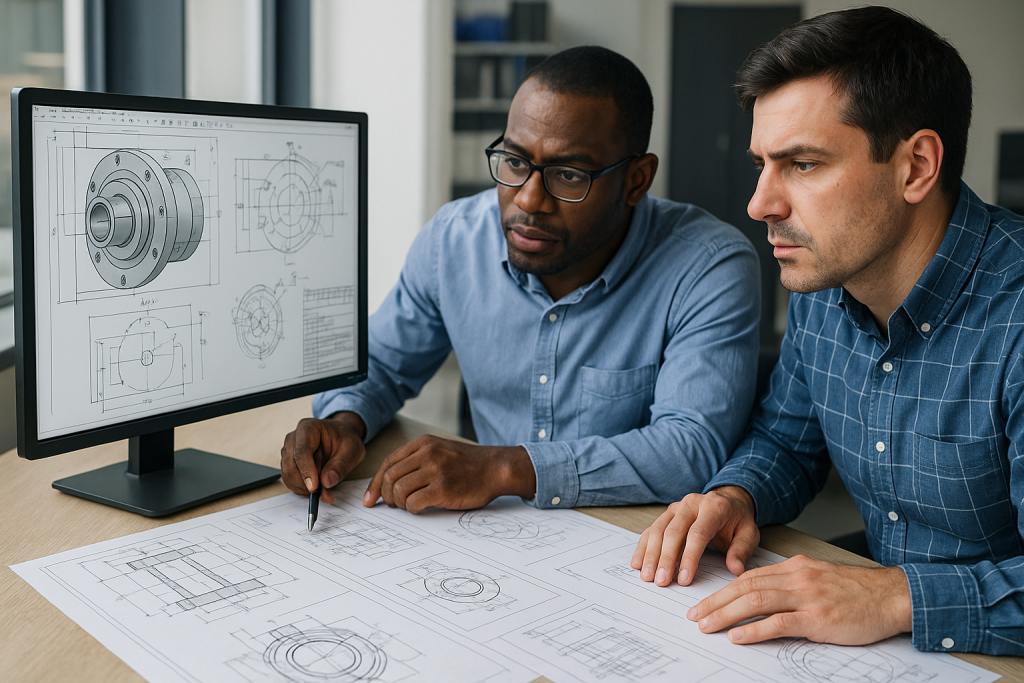
When developing a prototype, one of the most important decisions is choosing the right material. The choice between metal and plastic directly affects the prototype’s functionality, durability, cost, and overall performance.
By working with a professional partner like BOONA Prototypes, which offers CNC machining, 3D printing, and rapid prototyping across a wide range of metals and plastics, you can make informed decisions while balancing performance and budget.
I. Metal vs. Plastic: An Overview
BOONA Prototypes supports both metal and plastic prototyping, allowing clients to create realistic models using the same or similar materials as the final production parts.
-
Metal Options: Aluminum, stainless steel, brass, titanium, copper, bronze, magnesium, and more.
-
Plastic Options: ABS, nylon, POM, PEEK, acrylic, HDPE, polypropylene, polycarbonate, PET, and others.
This versatility ensures you can test prototypes under real-world conditions without compromise. Learn more about their CNC machining services.
II. Key Evaluation Criteria
1. Mechanical Performance
| Property | Metals (e.g., Aluminum, Steel) | Plastics (e.g., ABS, Nylon) |
|---|---|---|
| Tensile Strength | 200–1000 MPa | 40–150 MPa |
| Heat Resistance | High (up to 600°C) | Low–Moderate (80–250°C) |
| Electrical Conductivity | Excellent | Insulating |
| Wear Resistance | High | Moderate |
-
Metals excel in strength, rigidity, and heat tolerance.
-
Plastics offer flexibility, insulation, and chemical resistance.
2. Precision & Complexity
| Factor | Metals | Plastics |
|---|---|---|
| Tolerance | ±0.01 mm | ±0.05 mm |
| Machining Suitability | High for functional parts | Excellent for complex geometries |
| Surface Finish Options | Anodizing, polishing, powder coating | Painting, texturing, dyeing |
-
Metal prototypes are best when tight tolerances are required.
-
Plastics are more adaptable for complex geometries and aesthetic models.
3. Weight & Handling
-
Metals are heavier, ideal for simulating structural strength but may increase handling costs.
-
Plastics are lighter, lowering shipping and assembly costs—critical in consumer product design.
4. Cost & Lead Time
| Parameter | Metals | Plastics |
|---|---|---|
| Average Cost (per unit, prototype) | $150–$600 | $50–$200 |
| Lead Time (CNC machining) | 5–10 days | 3–7 days |
| Iteration Speed | Slower | Faster |
For early design iterations, plastics are typically more cost-effective. For functional testing, metals may justify higher costs. With BOONA rapid prototyping services, both options can be delivered quickly with low minimum order quantities.
III. Application Scenarios
-
Metal Prototypes: Aerospace brackets, automotive heat sinks, medical instruments.
-
Plastic Prototypes: Consumer electronics housings, ergonomic models, packaging solutions.
For more detailed case studies, visit BOONA industry solutions.
IV. Decision Framework
| Step | Consideration | Recommendation |
|---|---|---|
| 1 | Strength & heat resistance | Choose metal |
| 2 | Lightweight & flexible design | Choose plastic |
| 3 | Budget constraints | Plastics are more cost-effective |
| 4 | Long-term testing | Metals provide durability |
| 5 | Speed of iteration | Plastics for rapid changes |
V. Why Choose BOONA Prototypes?
-
Extensive Material Options: From PEEK plastics to titanium alloys.
-
Fast Turnaround: As quick as 3 days.
-
No Minimum Order Quantity (MOQ): Perfect for startups and R&D projects.
-
Surface Finishing Services: High-quality aesthetics and functionality.
Explore their full capabilities at boona-prototypes.com.
Conclusion
The decision between metal and plastic for your prototype is not one-size-fits-all—it depends on your project’s performance needs, budget, and timeline.
By leveraging the expertise and wide material library of BOONA Prototypes, you can create prototypes that are realistic, functional, and production-ready—helping you move from concept to market with confidence.
FAQs
1. What are the main differences between metal and plastic prototypes?
-
Metal prototypes offer higher strength, durability, heat resistance, and precision tolerances.
-
Plastic prototypes are lighter, more cost-effective, faster to produce, and better for testing complex geometries or aesthetic designs.
2. When should I choose a metal prototype instead of a plastic one?
Choose metal when your prototype requires:
-
High structural strength
-
Heat or wear resistance
-
Electrical or thermal conductivity
-
Realistic testing for aerospace, automotive, or medical applications
3. When is plastic a better option for prototyping?
Plastic is ideal for:
-
Early design iterations
-
Lightweight consumer products
-
Enclosures or casings
-
Cost-sensitive projects that require faster turnaround times
4. Which materials are commonly used for metal prototypes?
At BOONA Prototypes, common metals include:
-
Aluminum (lightweight, corrosion-resistant)
-
Stainless steel (durable, strong)
-
Brass (good machinability, corrosion resistance)
-
Titanium (high strength-to-weight ratio)
-
Copper (excellent thermal and electrical conductivity)
5. Which plastics are suitable for prototyping?
Typical plastics offered by BOONA Prototypes include:
-
ABS (durable, versatile)
-
Nylon (high wear resistance)
-
Polycarbonate (PC) (transparent, impact resistant)
-
PEEK (high-performance, heat resistant)
-
Acrylic (PMMA) (lightweight, clear)
6. Are plastic prototypes strong enough for functional testing?
Yes, engineering plastics like ABS, PC, and PEEK can withstand functional tests under moderate stress, heat, or chemical exposure. However, for extreme conditions, metal prototypes are recommended.
7. What is the cost difference between metal and plastic prototypes?
-
Plastic prototypes usually range from $50–$200 per unit, depending on material and complexity.
-
Metal prototypes may cost $150–$600 per unit, due to higher machining and material costs.
8. Can BOONA Prototypes help me decide which material is best for my project?
Yes. BOONA Prototypes provides engineering support, helping you choose the right material based on performance requirements, budget, and application.



